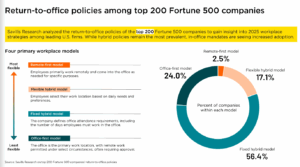The Lenders Backing Retail’s Resurgence
The retail asset class continues to demonstrate strong performance, and that has not gone un-noticed by the capital markets. Across a broad spectrum of lender types, retail is a highly desirable allocation target in 2024 , and that bodes well for borrowers recapitalizing or acquiring.
All real estate is local, but this rule far outweighs the exceptions. Later this year, we expect to see a pronounced and positive shift in market activity if the predicted rate cuts signaled by the Federal Reserve materialize.
Retail as rising star
That would be a welcome change to a market in flux. No doubt 2023 was a tough year for finance in every property class. Rate volatility and shifting fundamentals put the brakes on most sales and new development activity. We saw a sharp decline in trades across every CRE asset class last year, but that was more a story of price discovery and equity balance than debt availability. Most maturities, especially in retail, found a manageable debt solution. There are some retail types, like traditional malls, where performance better compares to office than a broader retail peer set. But, for the most part, retail came into 2024 as a shining star right alongside industrial and multifamily.
What we have seen from our roster of lenders is an appetite for credit-tenant power centers, single-credit tenant assets, grocery-anchored properties, neighborhood retail, strip centers, and experiential destinations. There are competitive bridge options for projects in transition, and plenty of fixed-rate programs at attractive rates for maturities. Lenders are confident that the fundamentals that have emerged this cycle will continue supporting healthy retail performance.
It is no secret that banks, once the main source for most commercial real estate financing needs, are facing one of their most challenging periods as CRE financiers. This doesn’t mean that they are completely absent as an option for the right borrower. Life companies remain a consistent source for stable permanent debt or, in some cases, bridge loans and are prized for their underwriting process and non-recourse terms. CMBS is an option for borrowers seeking a little more in the way of leverage, and we have seen the introduction of five-year term products. Debt funds and private capital are active in the bridge space as are some life companies and banks. Credit unions remain a resource for smaller properties and transactions.
What lenders want
All these lenders share a few common underwriting priorities.
Credit worthiness: The credit worthiness of tenants is the paramount driver in the lending universe. Most lenders operate off lists of approved credit tenants or check with their bond division for ratings. Even with smaller, non-rated tenants, credit and performance are scrutinized.
Lease term: For permanent debt, lease term is a high priority for underwriting. The shorter the term, the more perceived risk. Lease terms for single-tenant and multi-tenant properties are equally important. This includes analyzing store performance, rents, and renewal options.
Performance: Demonstrating historical performance and a healthy current rent roll are prerequisites for securing optimal terms. Deficiencies can obviously limit options.
Life Companies are still the optimal resource for stabilized properties. Their primary target is grocery- anchored properties. There is a home for most deals with these lenders, but the big differentiator will be loan size as they prefer larger transactions at $10 million and above. Their best options are pricing in the 145-165 bps range for transactions at low leverage. Life companies fund loans at three-, five-, seven- and 10-year terms, with higher spreads for lower terms up to 20bps wider.
Banks willing to fund real estate in general are fewer and further between. Small retail focused banks often don’t require additional deposits, but they will require operating accounts. They are credit tenant- oriented. They are looking for a 1.35 DSCR at 25-year amortization. Banks are not underwriting past five years for fixed rate, so 10-year loans will have a reset. They are attracted to the smaller loan space with large loans not as appealing as they consume bandwidth. They will lean into quality of income stream over real estate value. Banks do provide prepayment flexibility.
Debt Funds are mostly active in the bridge space and focused on fixed rate programs vs. floating-rate deals. A rate cap is required for most floating-rate loans. This category also includes family office and private lenders alongside institutional funds. CLO groups that would originate floating-rate loans with a 3+1+1 term with rate caps have gone away as the secondary market for loan bundles has retreated. Balance sheet bridge lenders are now in the driver’s seat. They move quickly and get paid for the risk. They are placing debt 450 bps for a 24-month term, roughly 9 percent.
CMBS has returned to favor in 2024. There are some new programs that offer five-year terms against what was once only a 10-year option. They are also doing rate buydowns. What that does is increase proceeds by reducing monthly carry cost. A five-year, interest-only execution provides the most loan proceeds for a permanent loan option amongst all permanent loan lenders. Last dollar of leverage. They will underwrite at a 255-bps spread to provide maximized proceeds.
Credit unions are a great resource and competitive for smaller transactions, with a sweet spot in neighborhood retail and strip centers. They are mainly a five-year lender but will do a 5+5 structure. They are looking for 1.35 DSCR on 25-year amortization. If you exceed the matrix, most likely a 30-year amortization will be available. Credit unions are almost always full recourse but offer prepayment flexibility.
Paddy Ryan and Andy Mekjavich are principals at Gantry Inc.
The post The Lenders Backing Retail’s Resurgence appeared first on Commercial Property Executive.






